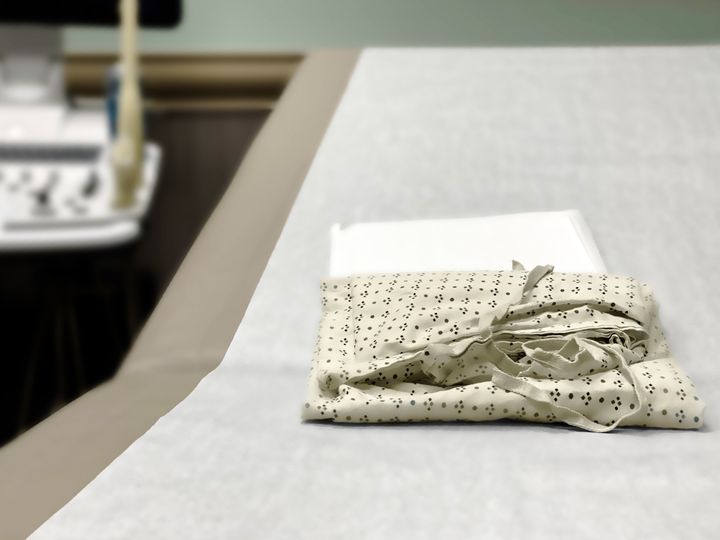
Training to be an obstetrician-gynecologist is both challenging and extraordinary. In a single 24-hour, sleepless shift as an OB-GYN resident, I might have the privilege of delivering a newborn to a joyfully tearful couple, bear witness to the unimaginable pain of a family processing an intrauterine fetal death, meet a patient in the emergency department and transport her to emergent surgery for an intra-abdominal bleed, and confirm the code status of a woman with terminal ovarian cancer.
On my toughest days, the days when physical and emotional exhaustion weigh heavy, blood soaks through my shoes, and my eyes well up with tears from the trauma I’ve witnessed, I think about why I chose to become an OB-GYN: to provide judgment-free, empathetic, supportive care to patients.
This care includes learning to provide abortions, a procedure I believe is an integral part of health care. In the United States, 1 in 4 women will have an abortion by the age of 45, so comprehensive reproductive health care must include abortion provision. As legislation across the country becomes increasingly hostile toward abortion providers, with threats of federal prison and cumbersome fines mounting and the possibility of Roe v. Wade being overturned, it feels important to share why I feel so strongly about protecting the right to provide abortion care.
Most anti-abortion legislators and advocates will go through their entire careers without ever spending significant time on a Labor and Delivery floor. I often wonder if Mike DeWine, the anti-abortion governor of Ohio, where I practice, understands how dangerous pregnancy can be to maternal life. I wonder if he can imagine what it’s like to watch a 14-year-old girl give birth while her abusive partner sits in the corner, to feel adrenaline flood your body while you struggle to gain control of a massive hemorrhage, to watch a patient seize from preeclampsia. Unfortunately, this happens more than it should where I work in Cleveland ― where people are dramatically affected by lack of access to care and the impact of systemic racism on health care. Training here is where I learned that pregnancy is not benign.
It strikes me as ironic that society has politicized the terms “pro-life” and “pro-choice” when I feel I am pro-life, working to protect the lives and health of the patients in front of me, while simultaneously understanding that not all patients truly have the “choice” to carry a pregnancy to term and care for themselves and their families.
If I’m being honest, I understand and acknowledge the perspective that there is moral complexity to terminating a pregnancy. It is not insignificant to me to end a potential life. However, that discomfort is far surpassed by my knowledge that for every termination I perform, the patient has been counseled thoroughly on all their options, including adoption, and that only they can understand what is best for themself, their body, and their current or future family.
I’m also aware that because patients understand what is best for themselves, their bodies and their families, prohibiting access to abortions will not stop abortions, but it will make access less equitable. Across the globe, mortality from complications of unsafe abortions is highest in areas where access is the most limited and where terminations occur outside of the clinical context. Legislators will not be the ones working in the emergency rooms and seeing the influx of sick patients coming in with complications from unsafe abortions because they decided to take matters into their own hands. It is us, young doctors, who will see the hemorrhages, perforated bowels and septic shock that our oldest teachers remember well.
I anticipate that if abortion restrictions increase in Ohio, my toughest days ― the ones where my physical and mental exhaustion is pushed to its limits ― will involve caring for patients affected by inequitable access to abortion care. Yes, self-managed medication abortions may pose a safe alternative to the traditional abortion provision that currently exists. But still, even with other options, it has been well-demonstrated that restrictive abortion legislation disproportionately burdens women of color, whether that be through delayed access and barriers to health care or through the known increased pregnancy-related morbidity and mortality that affects women of color in this country.
My job is both challenging and extraordinary. On the best days, I deliver healthy babies and cry tears of joy alongside happy couples welcoming new family members. On the worst days, I cry tears of sadness alongside devastated families who have lost the lives of their loved ones. For today, my hope is to paint a picture of the realities of what limiting access to abortion care looks like and feels like for patients and their providers, so that tomorrow I can continue to provide quality holistic care to the patients I serve.
Sarah Garber (she/her/hers) is an OB-GYN resident in Ohio. She graduated from the University of Michigan for medical school, where she completed the Global Health and Disparities Program. She is passionate about medical education, physician wellness, narrative medicine and reproductive justice for all. She has written and published multiple narrative essays in journals such as BMJ Opinion and Academic Medicine. All opinions expressed are her own.
Do you have a compelling personal story you’d like to see published on HuffPost? Find out what we’re looking for here and send us a pitch!
